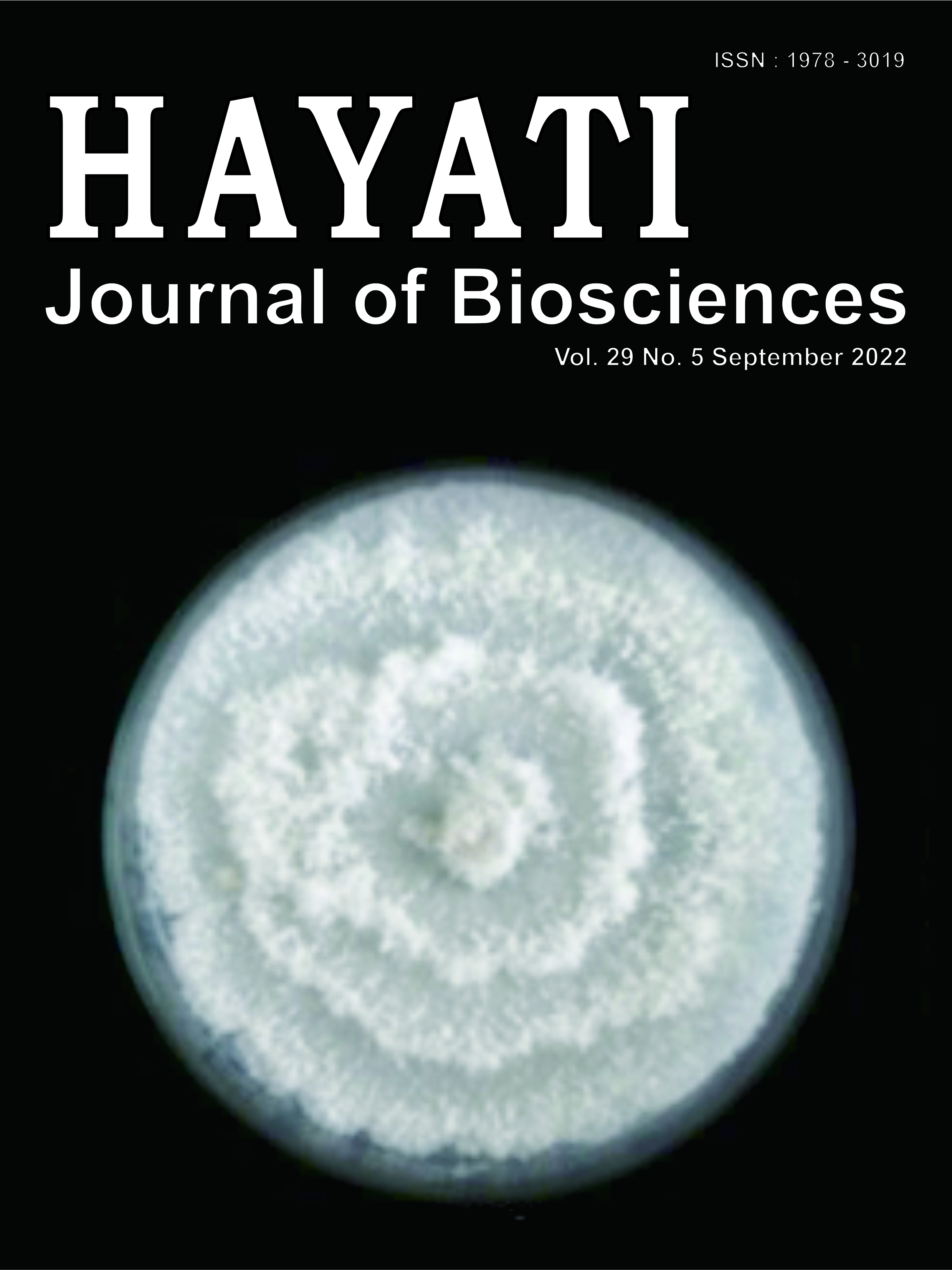Endophytic Fungi Isolated from the Mangrove Species Rhizophora apiculata and Their Efficacy as Herbicides
Abstract
Endophytic fungi play an important role on mangrove growth and development, however research on the endophytic fungi of the mangrove Rhizophora apiculata is limited. The endophytic fungi produce diverse bioactive compounds involved in the mangrove’s adaptation to varied biotic and abiotic stresses and could have applied uses in agriculture or medicine. The purpose of this research was to isolate endophytic fungi of Rhizophora apiculata mangrove and to study their activity as herbicides on the weed Gomphrena globosa. The fungi were isolated using the surface sterilization method and identified based on morphological characteristics and molecular characteristics using ITS regions of rDNA. Herbicidal activity of the fungal filtrates extracted by ethyl acetate were tested on seed germination and seedling growth of G. globosa. Five fungal isolates were obtained, namely Penicillium citrinum, Diaporthe eucalyptorum, Diaporthe musigena, Colletotrichum queenslandicum, and Diaporthe tectonae. All isolates were able to grow on PDA medium containing 0, 25, 50, 75, and 100 (% v/v) seawater concentrations, but the growth rate varied by species and seawater concentration. In general, all five isolates showed herbicidal activity by delaying seed germination and reducing shoot and root growth. P. citrinum showed the highest herbicidal activity compared to the other isolates. Analysis using Gas Chromatography-Mass Spectrometry of the crude extract of P. citrinum filtrate identified 7 main compounds: 3-Methoxy-2-methyl-cyclohex-2-enone, Cyclohexane-carbohexaldehyde, 6-methyl-3-(1-methylethyl)-2-oxo, Cyclopropane carboxylic acid, 1-(2-propenyl)-1,1-dimethylethyl ester, 2-Hydroxy-4-isopropyl-7-methoxytropone, Beta-Asarone, Oxane, 4-(2-amino-1-hydroxyethyl)-4-(3,4-dimethoxyphenyl)-, and Diisooctyl-phthalate. These compounds should be studied further to determine which ones are responsible for the herbicidal activity.
Downloads
Copyright (c) 2022 Za’aziza Ridha Julia, Nampiah Sukarno, Sintho Wahyuning Ardie, Irmanida Batubara, Soekisman Tjitrosoedirdjo, Mashuri Waite

This work is licensed under a Creative Commons Attribution-NonCommercial 4.0 International License.
HAYATI J Biosci is an open access journal and the article's license is CC-BY-NC. This license lets others distribute, remix, tweak, and build upon author's work, as long as they credit the original creation. Authors retain copyright and grant the journal/publisher non exclusive publishing rights with the work simultaneously licensed under a https://creativecommons.org/


















.png) IPB University
IPB University Department of Biology
Department of Biology The Indonesian Biological Society
The Indonesian Biological Society 

